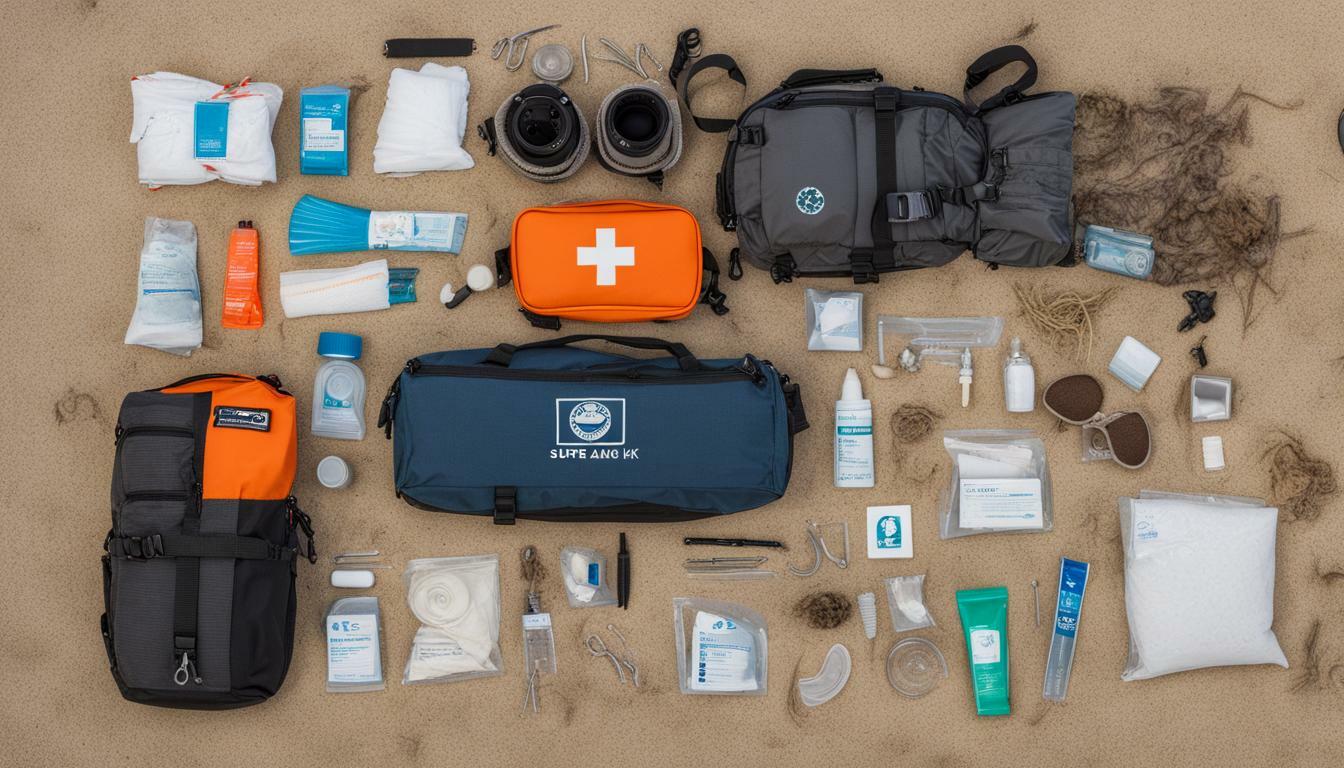As a professional surf photographer, you take on unique risks and challenges when you head out to capture the perfect shot. Whether you’re battling the waves or navigating the shore, the ocean presents many hazards that can result in injury or emergencies. That’s why it’s essential to be prepared with a well-stocked first aid kit that includes supplies specifically tailored to your needs.
When it comes to ocean safety, the importance of a first aid kit cannot be overstated. In the event of an injury or emergency, having the right supplies on hand can make all the difference in the outcome. From minor scrapes and cuts to more serious injuries like broken bones or hypothermia, your first aid kit serves as your first line of defence.
Key Takeaways:
- Professional surf photographers face unique risks and challenges when it comes to ocean safety.
- A well-stocked first aid kit tailored to your needs is essential for addressing injuries and emergencies.
- Having the right supplies on hand can make all the difference in the outcome of an emergency.
The Importance of First Aid Kits for Surf Photographer Safety
Surf photography is an exciting profession, but it comes with its own set of risks and hazards. From unpredictable waves to sharp rocks and marine life, the ocean can be a treacherous place. As a professional surf photographer, it’s essential to be prepared for any emergency. One way to ensure your safety is to have the right first aid supplies on-hand.
First aid kits for professional surf photographers should contain a variety of essential items, including waterproof bandages, saline solution, antiseptic wipes, and CPR masks. These items can address injuries common in the profession, such as cuts, abrasions, and burns. Having the necessary supplies readily available can make all the difference in a emergency.
Quick and effective response is crucial in any emergency, and having the right first aid supplies can help you address injuries promptly. Time is of the essence, particularly during emergencies, and any delay may result in further complications. Therefore, always ensure that you have first aid supplies on hand.
Having the right first aid supplies is not only essential for your safety but also for the safety of others. As a surf photographer, you may be in a position to help others during an emergency. By having the necessary first aid supplies, you can provide immediate assistance to anyone in need.

Therefore, it’s crucial to have a well-stocked first aid kit at all times. You never know when an emergency may arise, and being prepared can save lives. Don’t wait until it’s too late – invest in a high-quality first aid kit today and ensure your safety and the safety of those around you.
Essential First Aid Supplies for Professional Surf Photographers
Professional surf photographers face unique risks and hazards while working in the ocean. It is crucial to have the right first aid supplies to address injuries common in this profession. Keeping a well-stocked first aid kit on hand is essential for quick and effective response in emergency situations. Here are the must-have items for a professional surf photography emergency kit:
| First Aid Supplies | Description |
|---|---|
| Waterproof Bandages | Protects and covers wounds while surfing in the ocean. |
| Saline Solution | Cleans wounds and flushes out debris without causing irritation. |
| Antiseptic Wipes | Kills germs and prevents infection in case of an open wound. |
| CPR Mask | Protects the rescuer while performing mouth-to-mouth resuscitation. |
| Instant Cold Packs | Reduces swelling and relieves pain caused by injuries or stings. |
| Burn Cream | Treats burns caused by sun exposure or stovetops. |
| Tweezers | Removes splinters, debris, or tiny creatures from the skin. |
| Eye Drops | Relieves itchiness, dryness, or inflammation caused by saltwater. |
| Personal Medications | Prescription medicines for allergies, asthma, or medical conditions. |
In addition to these first aid supplies, a professional surf photographer should carry some safety gear while working in the ocean. Check out section 4 for a list of ocean safety equipment that you should have in your kit.
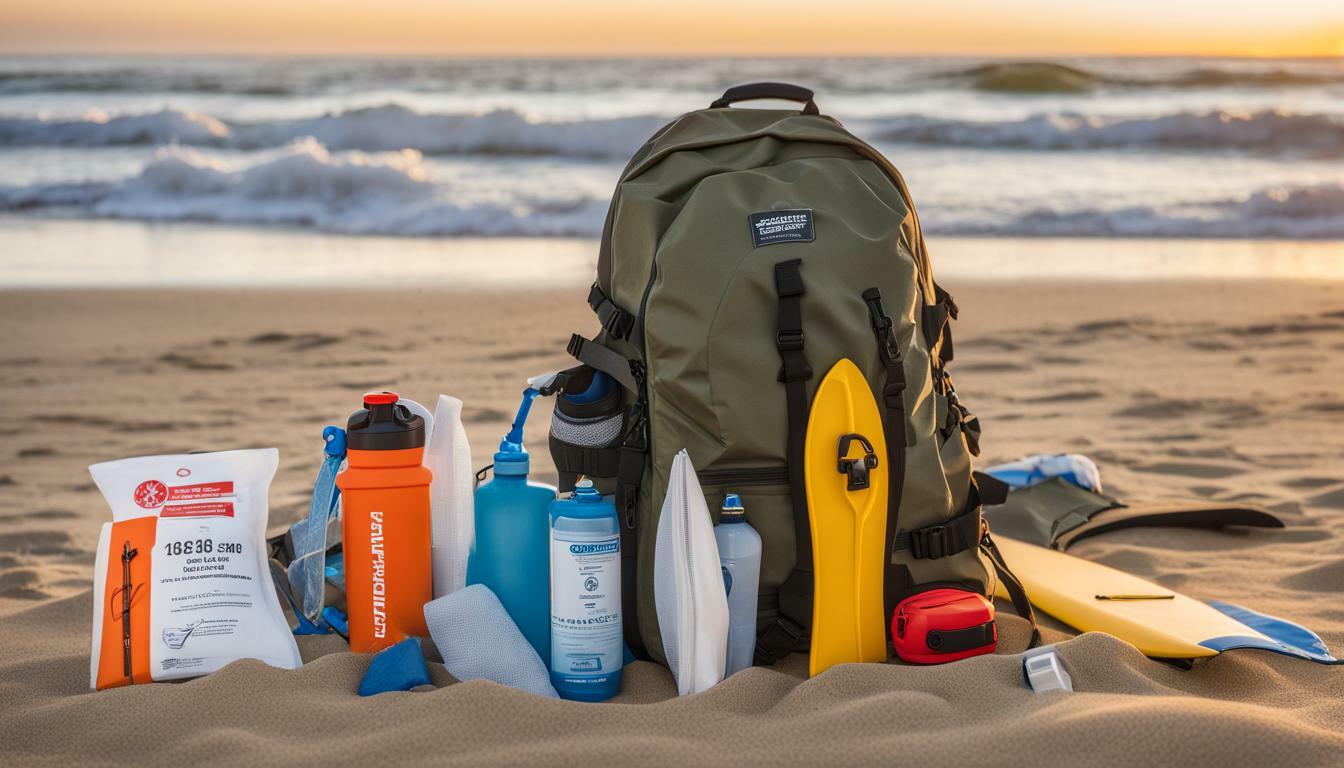
Beach Safety Equipment for Surf Photographers
Professional surf photographers face a wide range of risks and hazards while working in the ocean. To ensure their safety, it is important to have the right emergency supplies and safety equipment on hand. In addition to a well-stocked first aid kit, there are several types of beach safety equipment that can be beneficial for surf photographers.
Flotation Devices
One of the most important pieces of beach safety equipment for surf photographers is a flotation device. Whether it is a life vest or a buoyancy aid, having a flotation device can help keep you afloat in the event of an emergency. It can also make it easier for others to locate and rescue you if you become incapacitated.
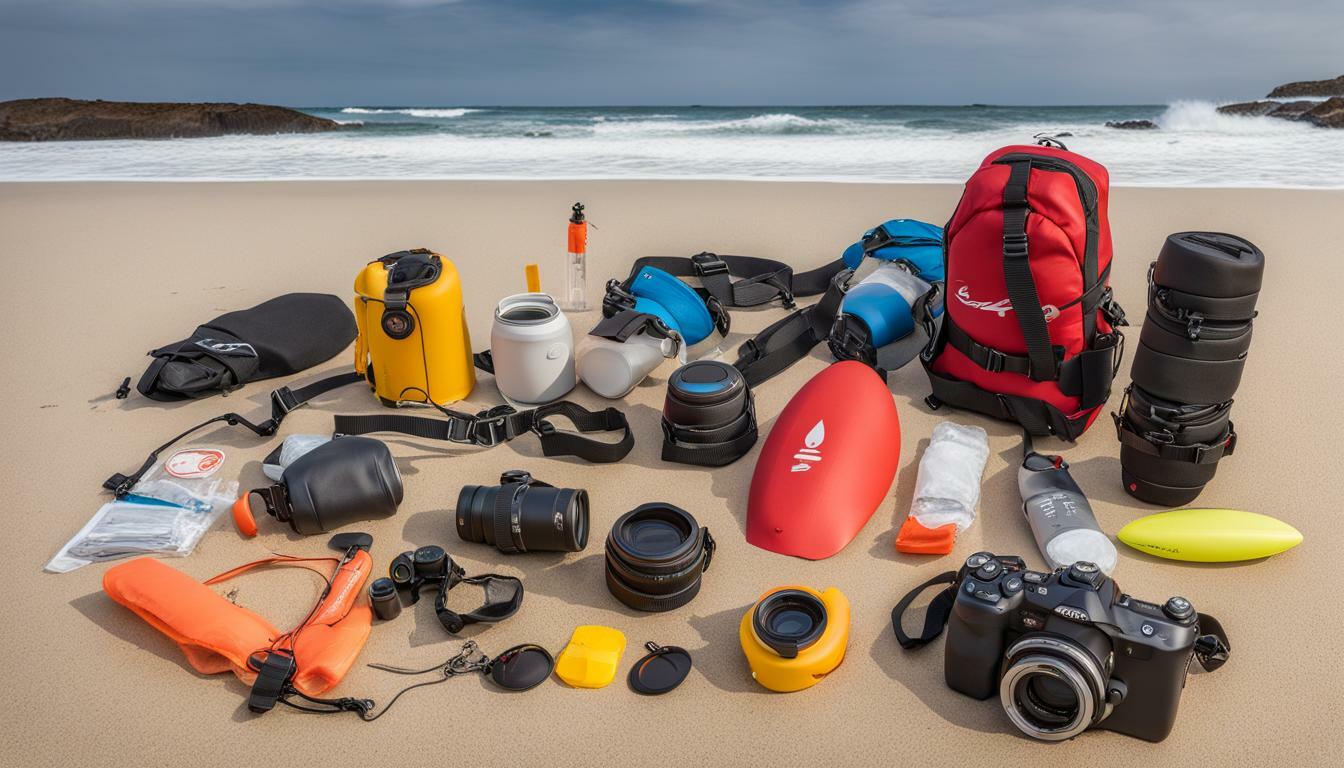
Rescue Tubes
Another useful piece of beach safety equipment is a rescue tube. These tubes are typically used by lifeguards, but they can also be beneficial for surf photographers. Rescue tubes provide additional buoyancy and can be used to help tow a person to shore or to assist with a rescue.
Signaling Devices
If you need to attract attention in an emergency, having a signaling device can be critical. This might include a whistle, a flare, or a portable strobe light. These devices can help draw the attention of other beachgoers or rescue personnel to your location.
Surf Photographer Emergency Supplies
In addition to beach safety equipment, it is also important to have a set of emergency supplies specific to the needs of surf photographers. These might include a water-resistant radio or phone, a whistle, and a brightly colored safety flag. You may also want to consider carrying a small survival kit with items such as a waterproof blanket, a container of water, and high-calorie snacks.
By having the right beach safety equipment and emergency supplies on hand, you can help mitigate the risks of working in the ocean and be better prepared to respond in the event of an emergency.
First Aid Kits for Ocean Photography: Choosing the Right Option
As a professional surf photographer, having the right first aid kit is essential to ensure your safety while out on the ocean. When choosing a first aid kit, there are a few things to consider to make sure it meets your needs.
Portability is one important factor to bear in mind. Your kit should be lightweight and easy to carry with you wherever you go. A waterproof design is also crucial, as you never know when your kit may get wet.
Another important consideration is the inclusion of specific items. Your kit should contain essential safety gear for professional surf photographers, such as waterproof bandages, antiseptic wipes, and saline solution.
There are a number of reliable first aid kit brands available that are specifically designed for ocean photography, including the Surf First Aid Kit and the Aqua Sport First Aid Kit. These kits are designed with the unique needs of surf photographers in mind, and include all the necessary supplies to address common injuries and emergencies.
Remember, choosing the right first aid kit is an important part of being well prepared for any situation while out on the ocean. With the right kit by your side, you can feel confident in your ability to respond to emergencies and keep yourself and your team safe.

First Aid Training for Professional Surf Photographers
As a professional surf photographer, it’s essential to have the right skills and knowledge to respond to emergencies. First aid training is a crucial aspect of ocean safety, enabling you to provide immediate assistance until medical professionals arrive.
Accidents can happen at any time, and it’s vital to be prepared for unexpected situations. By undergoing first aid training, you’ll learn how to stabilize injuries such as fractures and cuts, manage allergic reactions and burns, and administer CPR. You’ll also receive training on how to use essential first aid supplies, including bandages, splints, and wound dressings.
There are several accredited courses available for professional surf photographers, ranging from basic to advanced-level training. The courses typically cover a broad range of topics, including primary and secondary assessments, managing bleeding, and responding to cardiac or respiratory emergencies.
In addition to formal first aid training, it’s worth brushing up on your CPR skills regularly. CPR is a lifesaving technique involving chest compressions and artificial ventilation, which can help maintain blood flow and oxygenation in the event of cardiac arrest.
By investing in your first aid skills, you’ll not only enhance your own safety but also contribute to the overall safety of the surfing community.
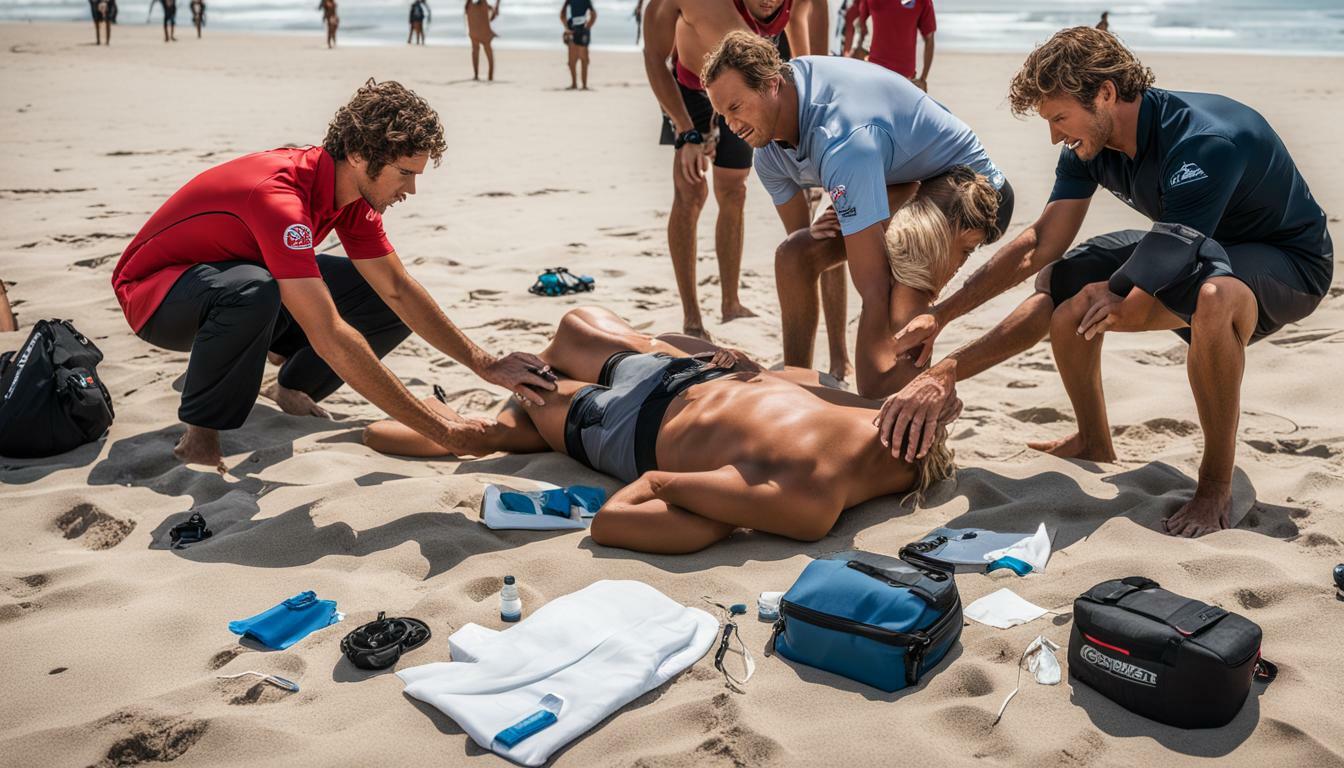
Remember to regularly refresh your first aid knowledge to ensure your skills remain up-to-date and relevant. Stay informed about best practices in ocean safety and seek guidance from professional organizations or experienced colleagues to enhance your skills further.
Building an Emergency Response Plan
Professional surf photographers should have a well-defined emergency response plan in place to mitigate risks and ensure their safety while on the water. An emergency response plan is a documented set of procedures that outlines how to respond to various emergencies, including accidents and injuries.
The first step in building an emergency response plan is to identify potential emergency situations. This might include anything from wipeouts and lost equipment to more serious incidents such as medical emergencies or threats from wildlife.
Once potential emergencies have been identified, the next step is to establish procedures for responding to each situation. This might include communication protocols, evacuation procedures, or first aid treatment procedures. It is important to be as specific as possible and to ensure that everyone involved in the plan understands their role and responsibilities.
Regular training and practice are crucial to ensure that the emergency response plan is effective in real-world situations. This should include regular drills and simulations to test response times and identify areas that need improvement.
Regularly reviewing and updating the emergency response plan is also essential. As conditions change or new risks emerge, the plan should be adjusted accordingly to ensure it remains effective and relevant.
| Key Points: |
|---|
| Identify potential emergencies |
| Establish procedures for each situation |
| Regular training and practice |
| Regularly review and update the plan |
By having a comprehensive emergency response plan in place, professional surf photographers can help mitigate risks and ensure their safety while on the water.
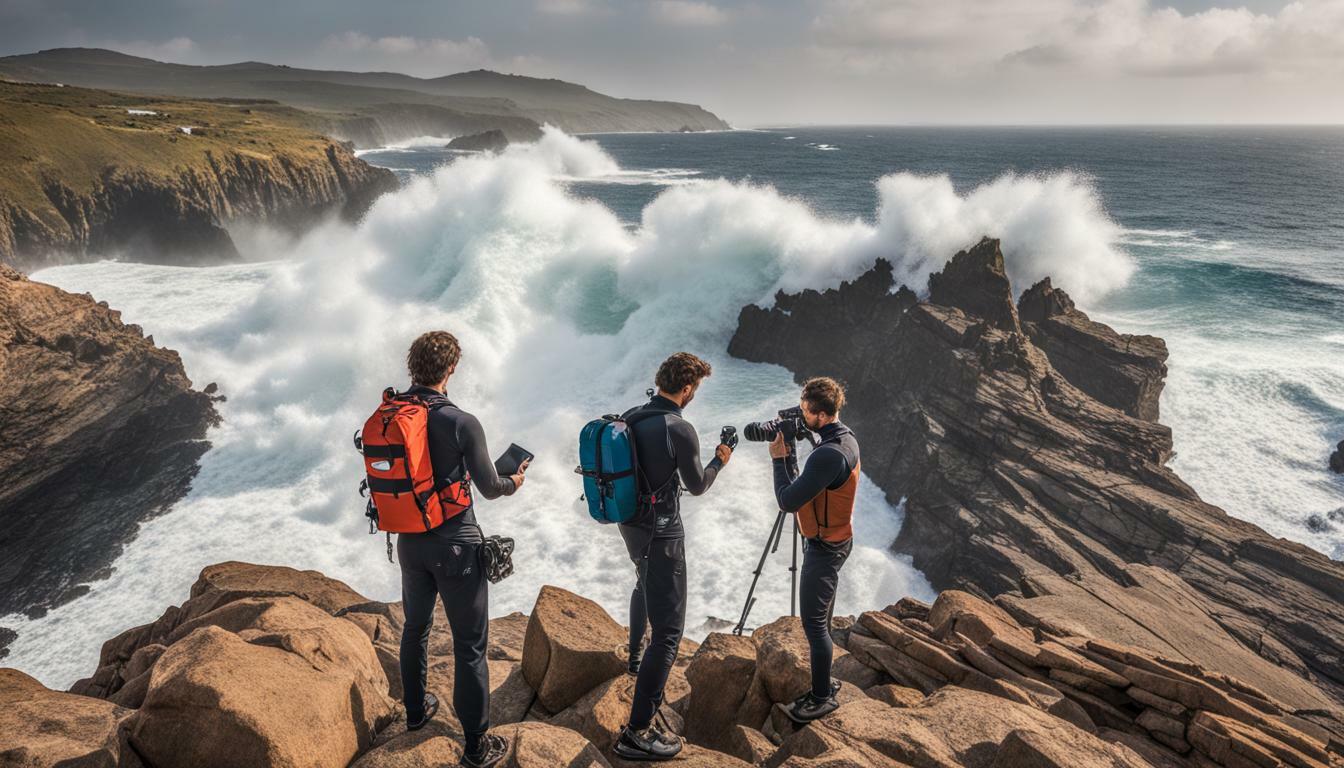
Maintaining and Inspecting First Aid Kits
Proper maintenance of first aid kits is crucial for ensuring surf photographer safety in emergency situations. It is essential to check kits regularly to ensure that they are stocked with necessary supplies and that all items are up-to-date.
One key aspect of maintaining a first aid kit is regularly checking the expiration dates of all items. Many products, such as antiseptic wipes and ointments, have a limited shelf life and can become less effective over time. It is important to replace any expired items to ensure that the kit is fully functional in an emergency situation.
Another crucial aspect of maintaining a first aid kit is keeping it clean and dry. Moisture can cause damage to supplies, so it is essential to store the kit in a dry location. Additionally, cleaning the kit periodically can help ensure that items are free of dirt and debris and are ready for use in an emergency.
When inspecting a first aid kit, it is also important to take note of any missing or depleted supplies. It is essential to replenish the kit with any missing items or supplies that have been used in an emergency situation to ensure that the kit is always fully stocked.
Finally, it is crucial to store the first aid kit in a location that is accessible and convenient. In an emergency, every second counts, so it is important to have the kit easily accessible.
By following these simple maintenance guidelines, surf photographers can ensure that their first aid kit is ready and reliable in the event of an emergency.
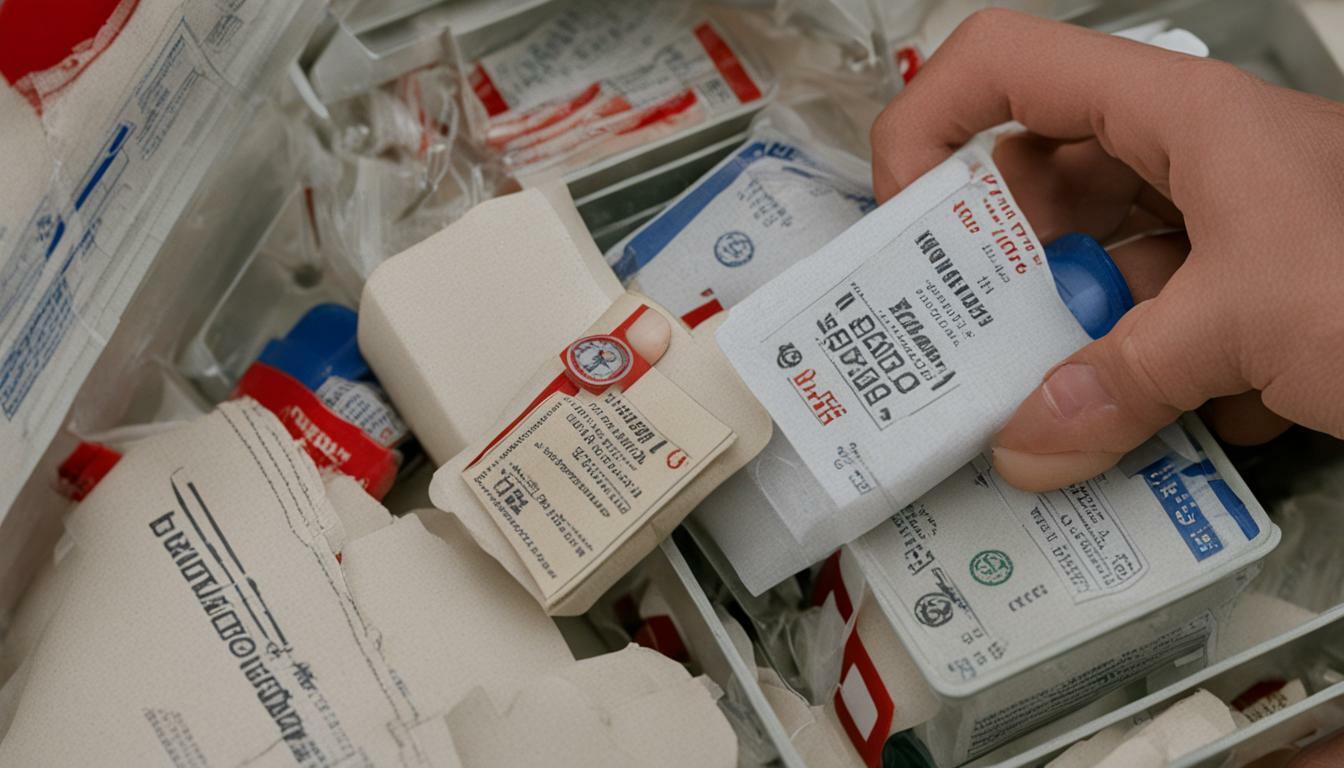
Ocean Safety Tips for Professional Surf Photographers
Professional surf photographers face unique challenges when it comes to ocean safety. To ensure a safe and enjoyable experience, it is important to follow specific guidelines and best practices. Here are some essential ocean safety tips for professional surf photographers:
- Assess surf conditions: Before entering the water, take the time to assess the surf conditions. Look at the size and direction of the waves, as well as the wind and tide patterns. Avoid surfing in conditions that are beyond your skill level.
- Understand rip currents: Rip currents can be dangerous and potentially life-threatening. Learn how to identify rip currents and know what to do if you get caught in one. Remember, rip currents do not pull you under — they pull you away from the shore. If caught, stay calm and swim parallel to the shore until you have exited the rip current.
- Recognize signs of fatigue/hypothermia: Cold water, long hours in the sun, and physical exertion can all take their toll on the body. Be aware of the signs of fatigue and hypothermia, such as shivering, clumsiness, and confusion. Take breaks when necessary and seek medical attention if symptoms persist.
- Use proper equipment: Always wear a leash and choose a surfboard that is appropriate for your skill level and the surfing conditions. Wear appropriate clothing, including a wetsuit if necessary. Use sunscreen and reapply often.
- Practice personal safety: Surf with a partner whenever possible and never surf alone. Be respectful of other surfers and ocean users. Avoid surfing near piers or other structures.
By following these ocean safety tips, professional surf photographers can minimize risks and enjoy a safe and successful surfing experience.
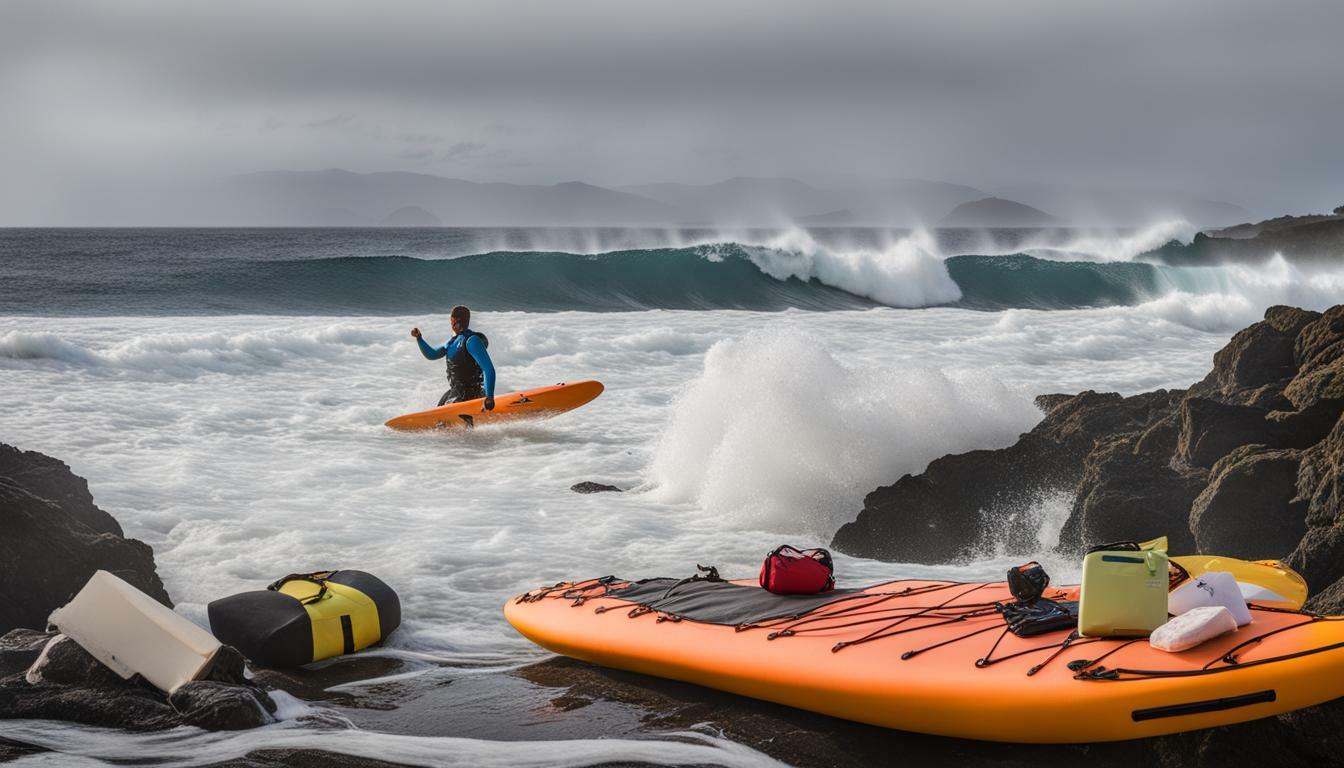
Conclusion
In conclusion, the safety of professional surf photographers is paramount, and having the right first aid kit and ocean safety equipment can make all the difference in an emergency. By equipping themselves with the essential supplies and knowledge, surf photographers can be better prepared to respond to injuries and hazards that are unique to their profession.
Choosing the right first aid kit for ocean photography requires careful consideration of a variety of factors, including portability, waterproofing, and the inclusion of specific items. It is also important to regularly maintain and inspect the first aid kit to ensure that supplies are up to date and in good condition.
Additionally, it is crucial for professional surf photographers to undergo first aid training and to build an emergency response plan that addresses potential emergencies in a clear and effective manner. This plan should be regularly practiced and updated to ensure that it remains relevant and effective.
Finally, to stay safe in the ocean, surf photographers should always be aware of their surroundings, assess surf conditions carefully, and understand the signs of fatigue or hypothermia. By prioritising their safety and staying informed about best practices in ocean safety, professional surf photographers can continue to capture breathtaking photos while minimising their risks.
